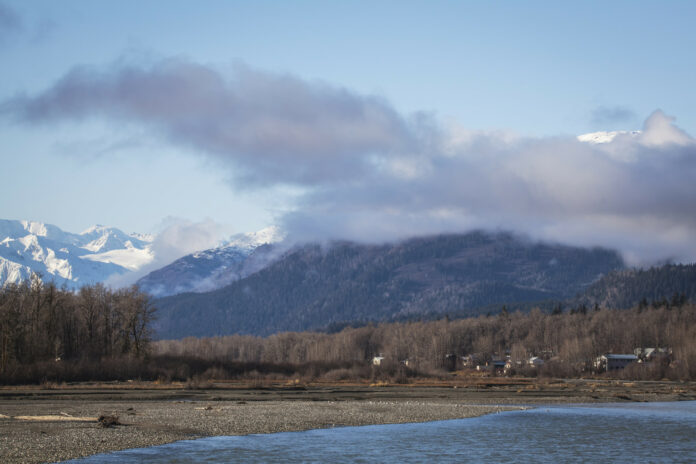New research on atmospheric rivers in Alaska could strengthen the National Weather Service’s warning systems, scientists have said.
A new study looked at how atmospheric rivers produced “floods, landslides, and avalanches that threaten lives and livelihoods,” in southwest Alaska.
Atmospheric rivers are corridors of concentrated, tropical moisture that travel through the atmosphere. When they are unleashed, they result in heavy rain and snowfall. Recent studies have suggested that they are increasing across the globe as a result of climate change.
Scientists involved in the study believe their research could help boost predictions and forecasts from the National Weather Service in the state.
mscornelius/Getty
They found that atmospheric rivers fall on southeast Alaska on eight to 14 days a month. However, only six a year account for 91 percent of precipitation extremes, the study showed.
They also found that rural and indigenous communities – Hoonah, Klukwan, Skagway, Yakutat, Craig and Kasaan – are more likely to face “stronger moisture transport.”
“The direction of the moisture transport plays a role in precipitation outcomes in each community,” the study authors wrote. “Coastal communities like Yakutat experience higher moisture transport and precipitation overall, and although moisture transport from the southeast is more common, extreme precipitation events are more common when moisture transport comes from the southwest.”
The study showed that inland communities including Klukwan and Skagway had a lower moisture transport yet saw a similar amount of rainfall in that area, “and 80 percent to 90 percent of extreme atmospheric river days have south-southwesterly or south-southeasterly moisture transport.”
“The results illustrate the opportunity to incorporate additional characteristics of Southeast Alaskan ARs to improve situational awareness, forecasts, and messaging from the National Weather Service Office in Juneau, Alaska for the vulnerable communities that they serve,” the study authors wrote.
“This study focuses on these six communities because they identified specific needs regarding hazards triggered by extreme precipitation and joined the Southeast Alaska Coastlines and People [(CoPe) Kutí (indigenous Tlingit word for “weather”)] Hub to address the shared challenge of predicting these hazards now and in the future,” the authors wrote in the study. “Although the results presented here focus on these six communities, the same methodology could easily be reproduced for other communities in Southeast Alaska.”
Atmospheric rivers can cause extreme weather, but they remain fairly difficult to predict. Although new methods are being developed often, the area requires more research.
A recent study published earlier this month found that moisture content in the air will only increase due to rising surface temperatures. As climate change worsens, so will these weather events. This will increase the number of atmospheric rivers that form, and the extreme weather that they often bring.
Do you have a tip on a science story that Newsweek should be covering? Do you have a question about Atmospheric Rivers? Let us know via [email protected].
Uncommon Knowledge
Newsweek is committed to challenging conventional wisdom and finding connections in the search for common ground.
Newsweek is committed to challenging conventional wisdom and finding connections in the search for common ground.


